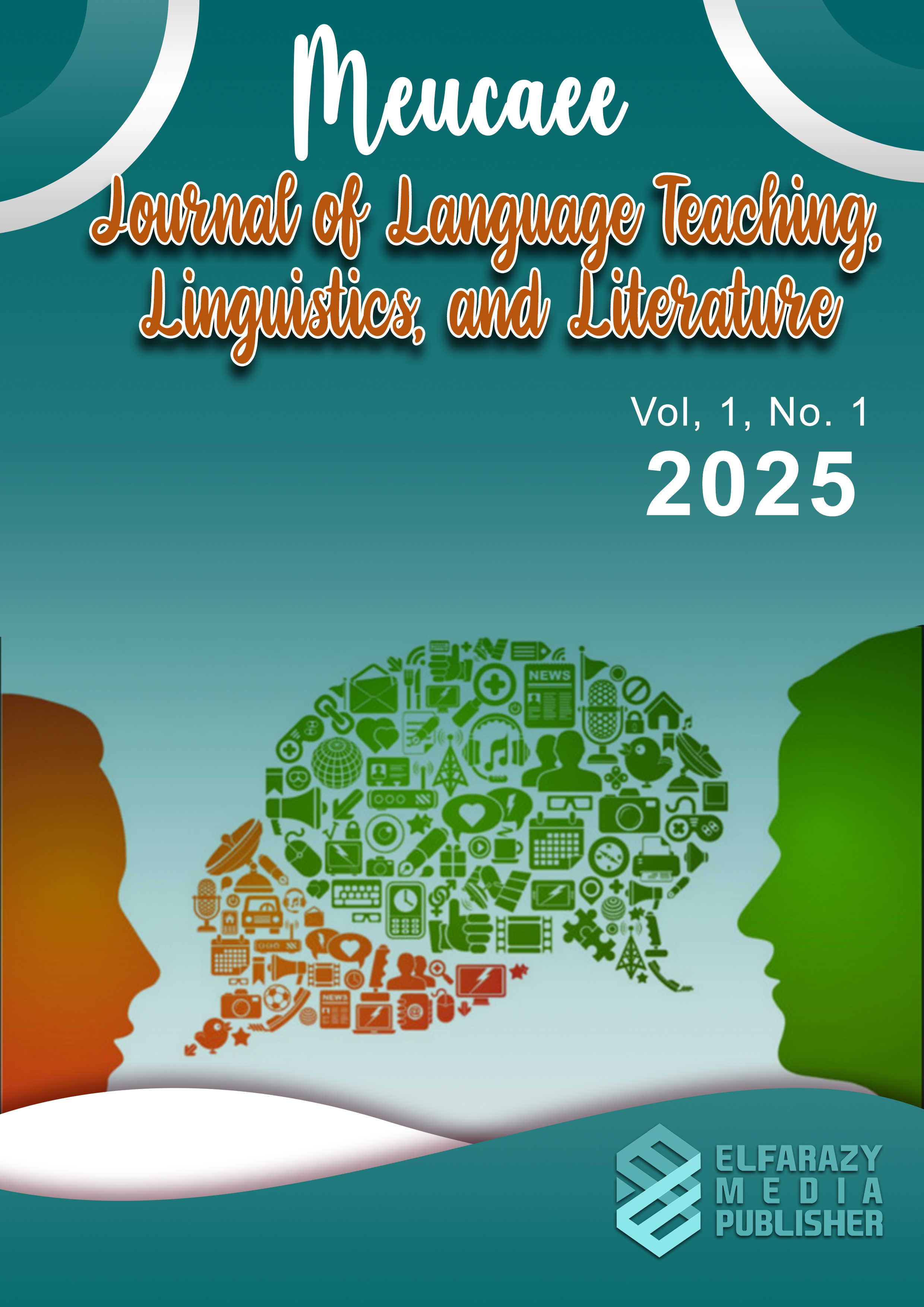Isi Artikel Utama
Abstrak
This research explores the representation of sexuality in the Indonesian film Open BO, focusing on the use of euphemism and dysphemism related to sexuality and how these linguistic strategies reflect gender ideologies, social discourse, and the commodification of sex in the digital age. The film portrays the growing trend of online prostitution, where women engage in transactional sexual activities via digital platforms. This study employs a qualitative approach using critical discourse analysis (CDA) to investigate how the film constructs gendered representations through language, while also analyzing the socio-cultural implications of these portrayals. The research highlights how the use of euphemism and dysphemism in Open BO reflects societal attitudes towards women’s sexuality, presenting them as both victims of exploitation and active agents of their own sexual commodification. Drawing on feminist theory, discourse theory, and theories of social media and digital capitalism, the study discusses how the film portrays the intersection of gender, sexuality, and economic survival, shedding light on the normalization of sexual commodification through digital platforms. Furthermore, the study explores the social and cultural impacts of the film's portrayal of online sex work, considering how it challenges traditional views on morality, gender, and sexual autonomy in contemporary Indonesian society. The findings of this research provide insights into the ways language and media intersect to shape social perceptions of sex, gender, and morality, while also contributing to the broader discourse on sexual commodification in the digital era. Ultimately, this study seeks to understand the evolving role of media in constructing societal norms surrounding sexuality and its implications for gender equality and sexual liberation in the context of Indonesia's socio-cultural landscape.
Kata Kunci
Rincian Artikel
Cara Mengutip
Referensi
- Bauman, Z. (2000). Liquid love: On the frailty of human bonds. Polity Press.
- Bennett, L., & Rutter, J. (2013). The commodification of love and sex in the digital age: A study of sex work and online platforms. Journal of Social Media Studies, 2(3), 45-62. https://doi.org/10.1234/jsms.2013.0294
- Bourdieu, P. (1990). The logic of practice (R. Nice, Trans.). Stanford University Press.
- Butler, J. (1990). Gender trouble: Feminism and the subversion of identity. Routledge.
- Cameron, D. (2005). Language and gender: Theory and practice. Blackwell Publishing.
- Connell, R. W. (2002). Gender. Polity Press.
- Fairclough, N. (1989). Language and Power. Longman.
- Fairclough, N. (1995). Critical Discourse Analysis: The Critical Study of Language. Longman.
- Foucault, M. (1978). The history of sexuality, volume 1: An introduction (R. Hurley, Trans.). Pantheon Books.
- Grice, H. P. (1975). Logic and conversation. In P. Cole & J. Morgan (Eds.), Syntax and semantics, vol. 3: Speech acts (pp. 41-58). Academic Press.
- Herbert, M. (1964). Eros and civilization: A philosophical inquiry into Freud. Beacon Press.
- Holmes, J. (2001). An Introduction to Sociolinguistics. Pearson Education.
- Lakoff, R. (1975). Language and woman’s place. Harper & Row.
- Mahsun, A. (2019). Representasi Gender dalam Media Indonesia: Perspektif Linguistik. Jurnal Sosiolinguistik Indonesia, 5(2), 78-91.
- Marcuse, H. (1964). One-dimensional man: Studies in the ideology of advanced industrial society. Beacon Press.
- Muehlenhard, C. L., & Kimes, L. A. (1999). Sexual consent and sexual coercion: A longitudinal study of college women and men. Journal of Social and Personal Relationships, 16(4), 537-555. https://doi.org/10.1177/0265407599164002
- Pratiwi, A., & Nugroho, F. (2020). “Eufemisme dan Disfemisme dalam Media Populer: Studi Kasus Televisi dan Film.” Jurnal Kajian Bahasa dan Sastra, 8(1), 45-56.
- Siregar, L. (2021). “Representasi Seksualitas dalam Film Dua Garis Biru: Analisis Wacana Kritis.” Jurnal Media dan Budaya, 10(3), 112-130.
- Spender, D. (1980). Man made language. Routledge & Kegan Paul.
- Tannen, D. (1990). You just don't understand: Women and men in conversation. William Morrow and Company.
- Van Dijk, T. A. (1993). Principles of Critical Discourse Analysis. Discourse & Society, 4(2), 249-283.
- Wodak, R. (2001). The Discourse of Politics in Action: Politics as Usual. Sage Publications.
Referensi
Bauman, Z. (2000). Liquid love: On the frailty of human bonds. Polity Press.
Bennett, L., & Rutter, J. (2013). The commodification of love and sex in the digital age: A study of sex work and online platforms. Journal of Social Media Studies, 2(3), 45-62. https://doi.org/10.1234/jsms.2013.0294
Bourdieu, P. (1990). The logic of practice (R. Nice, Trans.). Stanford University Press.
Butler, J. (1990). Gender trouble: Feminism and the subversion of identity. Routledge.
Cameron, D. (2005). Language and gender: Theory and practice. Blackwell Publishing.
Connell, R. W. (2002). Gender. Polity Press.
Fairclough, N. (1989). Language and Power. Longman.
Fairclough, N. (1995). Critical Discourse Analysis: The Critical Study of Language. Longman.
Foucault, M. (1978). The history of sexuality, volume 1: An introduction (R. Hurley, Trans.). Pantheon Books.
Grice, H. P. (1975). Logic and conversation. In P. Cole & J. Morgan (Eds.), Syntax and semantics, vol. 3: Speech acts (pp. 41-58). Academic Press.
Herbert, M. (1964). Eros and civilization: A philosophical inquiry into Freud. Beacon Press.
Holmes, J. (2001). An Introduction to Sociolinguistics. Pearson Education.
Lakoff, R. (1975). Language and woman’s place. Harper & Row.
Mahsun, A. (2019). Representasi Gender dalam Media Indonesia: Perspektif Linguistik. Jurnal Sosiolinguistik Indonesia, 5(2), 78-91.
Marcuse, H. (1964). One-dimensional man: Studies in the ideology of advanced industrial society. Beacon Press.
Muehlenhard, C. L., & Kimes, L. A. (1999). Sexual consent and sexual coercion: A longitudinal study of college women and men. Journal of Social and Personal Relationships, 16(4), 537-555. https://doi.org/10.1177/0265407599164002
Pratiwi, A., & Nugroho, F. (2020). “Eufemisme dan Disfemisme dalam Media Populer: Studi Kasus Televisi dan Film.” Jurnal Kajian Bahasa dan Sastra, 8(1), 45-56.
Siregar, L. (2021). “Representasi Seksualitas dalam Film Dua Garis Biru: Analisis Wacana Kritis.” Jurnal Media dan Budaya, 10(3), 112-130.
Spender, D. (1980). Man made language. Routledge & Kegan Paul.
Tannen, D. (1990). You just don't understand: Women and men in conversation. William Morrow and Company.
Van Dijk, T. A. (1993). Principles of Critical Discourse Analysis. Discourse & Society, 4(2), 249-283.
Wodak, R. (2001). The Discourse of Politics in Action: Politics as Usual. Sage Publications.
